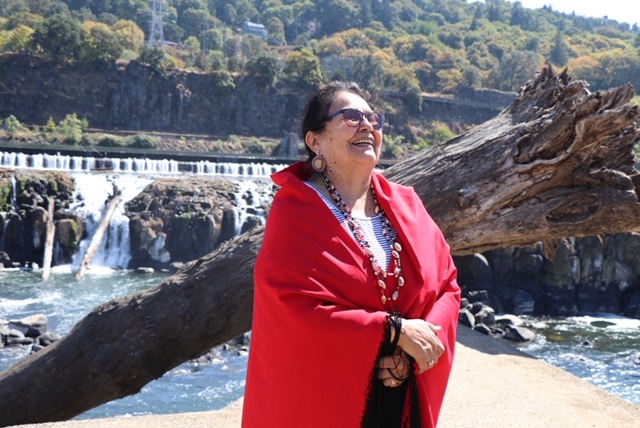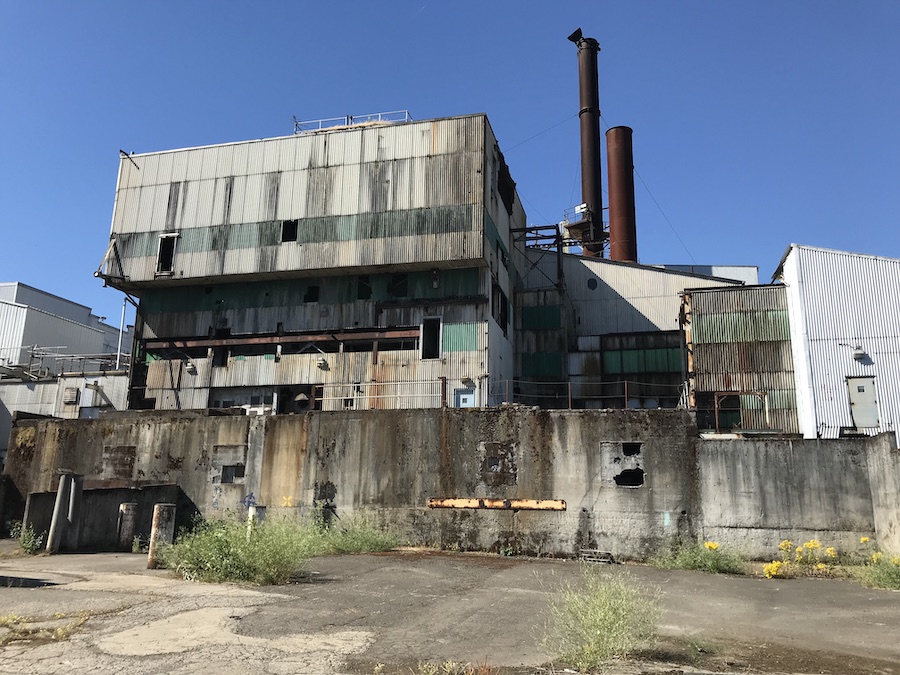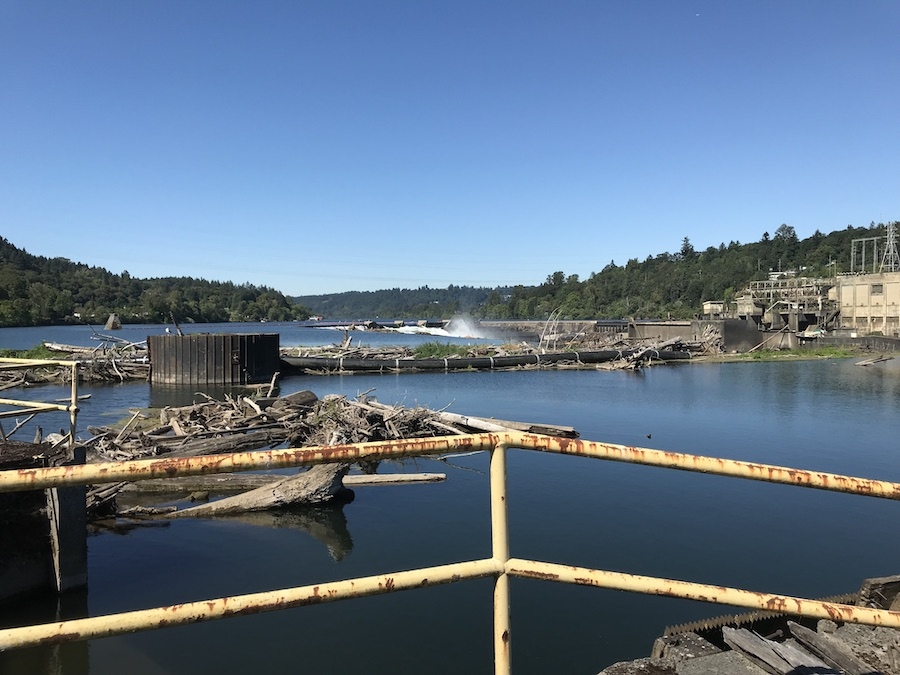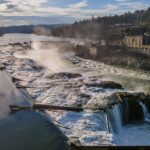Start on work to redevelop industrial land in Oregon City is put off as new owner changes design plans.
This spring government partners in the Willamette Falls Legacy Project had planned to start work on a public walkway that was designed to wind through a 23-acre plot of land that lies next to the second largest waterfall in North America by volume.
That project will now be delayed until 2021 after the new owner of the site, the Confederated Tribes of Grand Ronde, expressed concern that as they start to renovate and demolish buildings on the industrial land next to the Willamette River, the planned walkway could put the public at risk.
The tribes are requesting that the walkway be redirected to run solely along the waterfront to the platform overlooking the waterfall. In the original plan — put together by government stakeholders, including Metro, Oregon City, Clackamas County and the State of Oregon — the so-called riverwalk was to run through the industrial site, with the start of the walk beginning on Main Street in Oregon City.
“We talked with Metro about safety issues with construction and demolishment,” says Cheryle Kennedy, chairwoman of the Confederated Tribes of Grand Ronde. “We don’t want anyone to be hurt.”
 Cheryle Kennedy, chairwoman of the Confederated Tribes of the Grande Ronde
Cheryle Kennedy, chairwoman of the Confederated Tribes of the Grande Ronde
The tribes have taken on the task of decontaminating the industrial land, which was once the site of the largest woolen mill and newsprint producer on the West Coast. The last employer, the Blue Heron Paper Company, closed in 2011.
The cleanup of the site is challenging because of its many derelict factory buildings. Several are constructed in layers on top of each other and are made out of steel and concrete.
The site is also contaminated with hazardous materials, such as asbestos and lead paint.
 The derelict Blue Heron Paper Company mill on the industrial land next to Willamette Falls
The derelict Blue Heron Paper Company mill on the industrial land next to Willamette Falls
Kennedy says the tribes have $1 million set aside for the cleanup. She says the group is still interested in preserving industrial buildings to acknowledge their historical value. “We are looking at renovation or retrofitting. We value history; we won’t just be going through the site with a bulldozer.”
The tribes bought the property from real estate developer George Heidgerken last year. Heidgerken bought the property in 2014 for around $2.3 million but had not done anything to renovate the site and had disagreed with the government stakeholders over the riverwalk design.
The land is an important cultural site for the tribes, which lived along the river for generations before industry moved in. Native Americans still fish for lamprey at the falls. Kennedy says the group plans to improve water quality and restore fish habitat.
The chairwoman says the tribes are still considering the development of a hotel and retail stores on the property. The group is working with the Museum of the Oregon Territory to portray the site’s historical importance.
“We want it to be a cultural experience for people,” says Kennedy.
The one-year delay to the start of the project will not impact public funds for the first phase of the riverwalk project, says Brian Moore, the Willamette Falls Legacy Project manager at Metro.
The stakeholders have secured $12.5 million from the State Legislature for development of the public walkway.
To subscribe to Oregon Business, click here.






